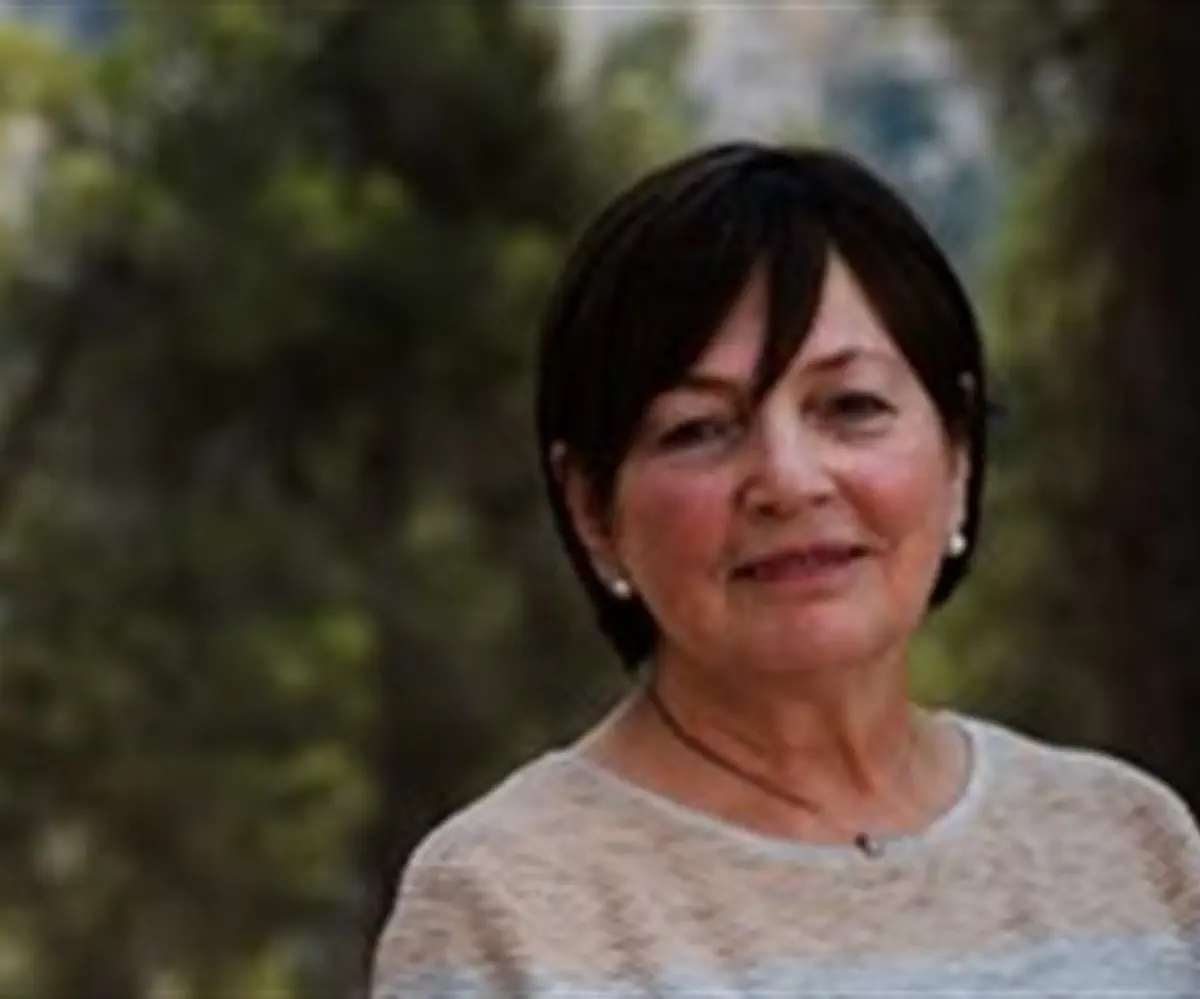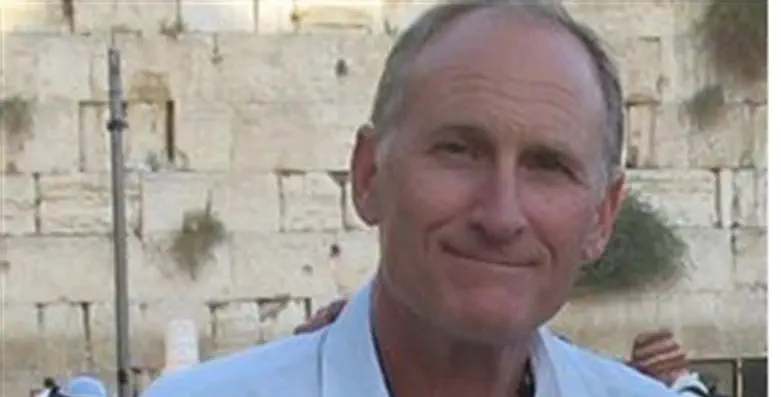T. Belman. I posted this article for two reasons. One, I have worked with Rochel for many years. Not only did she publish all my submissions but she also stood by me in my fight for the Jordan Option. Secondly I intended to acknowledge Shalom Pollack’s role in drawing attention to the Yad Vashem omission. Our paths have often crossed. We three are proud , Israel First, olim.
‘Jews, Israelis and Arabs, an Observer’s view of Israel’s Shifting Society’,’ a politically incorrect, refreshing look at Israel. Review.

Rochel SylvetskyYonatan Zindel-
Israel’s main Holocaust memorial museum Yad Vashem was publicly castigated recently for removing a large and famous photograph showing Adolf Hitler meeting with his ally in Jew-hatred, the anti-Semitic Mufti of Jerusalem Haj Amin el Husseini. Today, one can only find a small print of the photo in a different room. Critics consider the decision politically-motivated, pandering to the Arab sector. Yad Vashem claims that it is a minor part of the Holocaust story and, somewhat ingenuously, that their subject is the victims, not the perpetrators.
Except that the museum is in Jerusalem and the Mufti was Hitler’s representative in the Middle East, the man who incited the horrendous 1929 Hebron massacre and suggested various extermination projects to Hitler. One of them was to build concentration camps in Israel’s Dotan Valley, banking on the Third Reich’s successful Africa and Middle East campaign to allow the Final Solution to include Jews in the region. Unfortunately for them and luckily for Israel’s Jews, the German defeat at the battle of El Alamein nixed that plan.
We might have noticed the change in photos – especially if we were tour guides who frequented the museum constantly like the author of this book, Shalom Pollack. Perhaps we would have complained if it bothered us, and then, once refused, most likely left it at that.
Not so Shalom Pollack, a true Zionist and Jew-firster American who made aliya decades ago and is a well known tour guide. Having brought the issue to Yad Vashem’s new director’s attention, he did not take the no he received lying down and the resulting media exposure, including an Arutz Sheva op-ed, a ZOA press release and an article by Daniel Greenfield, all stem from his willingness to fight for what he believes is right.
And reading the 68 stories in this most interesting book, I realized that non-violent, polite but intrepid Pollack always fights the good fight even if he is a lone voice in the darkness or ends up suffering for raising his voice of truth in hostile or politically correct environments.
What does he believe in? Protecting Jewish lives above all, supporting Jewish rights to the land of Israel, telling it like it is regarding: terrorists, Arab inability to make peace with our presence, misguided or ignorant Jews who empathize with them, shortsighted leaders and damage-causing Leftists. He shows his love for Jews and Israel and his desire to affect as well as inform the reader in two important appendices – one the heartbreaking list of Israeli terror victims since the 1993 Oslo Accord titled “Those who paid the price of peace” and the other, most useful, a set of maps showing the size and borders of Israel (no fake “Palestine”) since 1920. He shows his wry humor in the closing chapter called Comments by other Observers, including the anonymous “In the Middle East, you are eating the meal or are part of the menu” and Shimon Peres’ egregious “History is not important.”
By now you have realized that Pollack is the antithesis of politically correct. After reading this book, however, I tend to think that instead of being politically correct, he is simply and unashamedly correct. It’s quite refreshing. After all, once almost all the world talked the way he does about Israel.

Shalom Pollack
What happened to change that? Many draw the demarcation line at the Six Day War when the Israelis made the mistake of winning (see Ephraim Kishon’s famous “apology”) instead allowing themselves to be buried in the graves they had prepared in Tel Aviv or thrown into the nearby sea.
After that miraculous victory, the Arab nations accepted savvy Russian pr advice, standing back and letting the Palestinian Arabs create the imaginary Palestinian people, thereby brilliantly turning us into Goliath and them into David. Legends about how many Arabs there were here when the Jews began to return (ignoring eye witness reports), ongoing destruction of evidence of indigenous Jewish life here from time immemorial, Big Lie baseless accusations of apartheid and genocide (oh, really!) – are some of the factors involved. Add to that inborn anti-Semitism, postmodern narratives, population changes leading to politicians trying to curry favor with Muslim voters, and the part BLM, CRT,woke and cancel culture play in spreading intersectional calumny about the Jews, actually less than one half of one percent of the world’s population.
Pollack meets up with all of the above and sometimes you can picture him, wistfully scratching his head, asking where logic and truth have gone. It used to be Arab oil motivating anti-Israel activities and then, most good people fought that obvious pressure, but now it is much, much harder.
All that explains the goyim and assimilated Diaspora Jews, but does not answer what happened to so many Israelis – not the majority, thank G-d, but a majority of the judiciary, media and academia, and today, a good part of the current government. How did It become the Israelis vs. the Jews on so many fronts? Pollack astutely answers this question right at the start of the book, quoting the prescient, now somewhat ominous, words of Rabbi Avraham Hacohen Kook, Israel’s first Chief Rabbi when speaking to the pioneers he so admired, warning them that if they continued to be divorced from the Torah, their children would reject the very Land of Israel for which they dedicated themselves.
As Pollack remarks, Rabbi Kook proved to be a prophet. Today’s Israeli Left, he adds, wants to dejudaize the Jews in Israel and that is the main problem. Everything else, including the Israeli Arab recent pogrom in mixed population cities, is just a symptom, a statement which seems a wise and realistic conclusion.
I am avoiding telling the varied, fascinating personal experiences written and incisively analyzed in this book so as to leave the reader to enjoy them – and enjoy them he will. Hopefully, he will be led to think about what they say. A few highlights are Pollack’s conversation with his Arabic teacher, his take on Min. Yair Lapid’s fatuous words on anti-Semitism, his meetings with all kinds of people – Kurdish, Ethiopians, Druze, fellow reservists, Shalva kids, Women in Green, those taking his tours and for good measure, some useful idiots. Then here is his call for justice for Ahuvia Sandak and his call to prevent the spilling of Jewish blood after a shiva call to widowed Sofia Borovsky and her orphaned children .And more.
A taste of the titles is in order, however: “Who wants Jerusalem?”, “A great army is not enough”, “From where the hate?”, “What is to be done about the Arab threat?”, “Just a few stones”, “The March of Return in Gaza”, all of them examples of straight talk in a world in which words have been laundered into meaningless mantras.
Somewhat reminiscent of Tuvia Tennenboim’s peripatetic style and content, but very differnt in substance, the book is fast paced and written in clear, simple and unaffected prose. It does not aspire to be great literature, but it is a great read – and a solid rock to hold on to in the midst of the shifting sands of Israel’s history.
Jews, Israelis and Arabs, An Observer’s View of Israel’s Shifting Society (published by (Mazo Publishers, 212 pages, softcover)
Rochel Sylvetsky made aliya to Israel with her family in 1971, coordinated Mathematics at Ulpenat Horev, worked in math curriculum planning at Hebrew U. and as academic coordinator at Touro College Graduate School in Jerusalem. She served as Chairperson of Emunah Israel and was CEO of Kfar Hassidim Youth Village. Upon her retirement, Arutz Sheva asked her to be managing editor of the English site, a position she filled for several years before becoming Senior Consultant and Op-ed and Judaism editor. She serves on the Boards of Orot Yisrael College and the Knesset Channel.



It about appeasing the Palestinians?
Has anyone noticed that the Israeli professor who has written a thorough study of the Deir Yassin incident has finally been published in English. For two years, it was available only in Hebrew, although the professor originally wrote it in English. He tried for two years to get a university press in England or America to publish it, but they all refused.
The book proves that the Deir Yassin event was a battle between Israeli soldiers and Palestinian guerrillas, not a massacre as everyone has always claimed for the past 72 years. Many of the Arab guerrillas were residents of Deir Yassin , who had recently promised representatives of Hajj Amin Husseini’s Arab Higher Committee that they would join their guerrilla-terrorist war it was waging against the Jews.
The author says that the total Arab deaths were about 120, not 254 as has alway been claimed. 41 of the Arabs killed were armed guerilla fighters, who resisted the two Jewish companies who attempted to occupy the village for at least eight hours. The Jewish attack force was pinned down for hours and had to call in reinforcements. Four Jewish soldiers were killed and seven seriously injured.
The author explains that there were many Arab noncombatant casualties because the armed guerillas were firing at the Israelis from the buildings in which the unarmed women, children and old people were hiding. All lights in the houses had been extinguished, and the Israeli soldiers had no way of distinguishing between armed guerillas and the noncombatants.
The reason that the Israeli casualties were much lower is that the Arab guerrillas were using rifles that had just arrived from Egypt, and that they had not even had time to practice firing before the battle began. Inevitably , their aims was imperfect and relatively (relatively) few Israeli soldiers were killed or seriously injured. Also, the Arabs fighters were given only 24 hours of military training by the Arab Higher Committee, which limited their fighting ability. Under the circumstances, their success in holding off the Israeli attackers for hours and killing or wounding some of them is remarkable.
The book is available from Amazon and Goodreads. At least it was when I last checked. Their was a storm of angry protests and denunciations from readers when Goodreads posted it on its Twitter and Facebook pages.
I will provide the necessary bibliographic information, including the author’s name, title and publisher in a subsequent post.